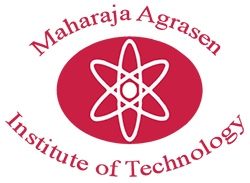THEORY OF MACHINES LAB

Lab Incharge : Dr. Piu Jain
Lab Technician : Mr. Brijesh Kumar Pal
Lab Overview:
The Theory of Machines (TOM) laboratory is a hands-on facility designed to provide students with a comprehensive understanding of the principles and concepts of mechanical engineering. The lab is equipped with a range of equipment, including a kinematic chain analysis setup, gears, gyroscope, vibration experimentation setup, cam and follower mechanisms, and other specialized equipment.
The primary objective of the TOM lab is to provide students with a practical understanding of the theoretical concepts of mechanical engineering, including kinematics, dynamics, and vibrations. Students will learn to design, analyze, and test mechanical systems, and develop problem-solving skills and critical thinking.
Key Equipment and Experiments:
- Balancing of Reciprocating masses
- Cam Analysis Apparatus
- Cycloidal Gear Model
- Centrifugal Clutch
- Cam & Followers Set Model
- Coriolis Acceleration
- Digital Tachometer
- Epicyclic Gear
- Energy of FlyWheel Apparatus
- Four Bar Link Mechanism
- Gyroscope Apparatus
- Internal Gear Pinion Drive Model
- Oscillating Cylinder Mechanism Model
- Planetary Gear Train Model
- Reciprocating Engine Mechanism Model
- Static and Dynamic Balancing Apparatus
- Single Stage Helical Gear
- Single Stage Spur Gear With Intermediate
- Three Stage Spur Gear
- Two Stage Spur Gear
- Universal Governor Apparatus
- Universal Vibration Testing Machine
- With Worth Quick Return Mechanism
- Whirling of Shaft Apparatus
- Bifiller Suspension
- Trifilar Suspension
- Unclamped vibration of spring apparatus
- Belt Drive Model
Learning Objectives:
By the end of this course, students will be able to:
- Identify different types of kinematic chains and illustrate their inversions through appropriate mechanisms.
- Analyze the motion characteristics of simple, compound, epicyclic, and differential gear trains, and explain the applications of the gyroscopic principle.
- Differentiate between the working principles of a flywheel and a governor with examples.
- Calculate the required balancing mass in rotating systems and evaluate the behavior of damped and undamped vibrations in a spring-mass system.
By providing hands-on experience with a range of equipment, the TOM lab prepares students for careers in mechanical engineering, design, and research.









